Volume 966
Lecture Notes in Physics
Series Editors
Matthias Bartelmann
Heidelberg, Germany
Roberta Citro
Salerno, Italy
Peter Hnggi
Augsburg, Germany
Morten Hjorth-Jensen
Oslo, Norway
Maciej Lewenstein
Barcelona, Spain
Angel Rubio
Hamburg, Germany
Manfred Salmhofer
Heidelberg, Germany
Wolfgang Schleich
Ulm, Germany
Stefan Theisen
Potsdam, Germany
James D. Wells
Ann Arbor, MI, USA
Gary P. Zank
Huntsville, AL, USA
Founding Editors
Wolf Beiglbck
Heidelberg, Germany
Jrgen Ehlers
Potsdam, Germany
Klaus Hepp
Zrich, Switzerland
Hans-Arwed Weidenmller
Heidelberg, Germany
The Lecture Notes in Physics
The series Lecture Notes in Physics (LNP), founded in 1969, reports new developments in physics research and teaching-quickly and informally, but with a high quality and the explicit aim to summarize and communicate current knowledge in an accessible way. Books published in this series are conceived as bridging material between advanced graduate textbooks and the forefront of research and to serve three purposes:
to be a compact and modern up-to-date source of reference on a well-defined topic
to serve as an accessible introduction to the field to postgraduate students and nonspecialist researchers from related areas
to be a source of advanced teaching material for specialized seminars, courses and schools
Both monographs and multi-author volumes will be considered for publication. Edited volumes should however consist of a very limited number of contributions only. Proceedings will not be considered for LNP.
Volumes published in LNP are disseminated both in print and in electronic formats, the electronic archive being available at springerlink.com. The series content is indexed, abstracted and referenced by many abstracting and information services, bibliographic networks, subscription agencies, library networks, and consortia.
Proposals should be sent to a member of the Editorial Board, or directly to the managing editor at Springer:
Dr Lisa Scalone
Springer Nature
Physics Editorial Department
Tiergartenstrasse 17
69121 Heidelberg, Germany
lisa.scalone@springernature.com
More information about this series at http://www.springer.com/series/5304
Edoardo Lauria and Antoine Van Proeyen
N= 2 Supergravity inD= 4, 5, 6 Dimensions
Edoardo Lauria
CPHT, Ecole Polytechnique, Palaiseau, France
Antoine Van Proeyen
Institute for Theoretical Physics, KU Leuven, Leuven, Belgium
ISSN 0075-8450 e-ISSN 1616-6361
Lecture Notes in Physics
ISBN 978-3-030-33755-1 e-ISBN 978-3-030-33757-5
https://doi.org/10.1007/978-3-030-33757-5
Springer Nature Switzerland AG 2020
This work is subject to copyright. All rights are reserved by the Publisher, whether the whole or part of the material is concerned, specifically the rights of translation, reprinting, reuse of illustrations, recitation, broadcasting, reproduction on microfilms or in any other physical way, and transmission or information storage and retrieval, electronic adaptation, computer software, or by similar or dissimilar methodology now known or hereafter developed.
The use of general descriptive names, registered names, trademarks, service marks, etc. in this publication does not imply, even in the absence of a specific statement, that such names are exempt from the relevant protective laws and regulations and therefore free for general use.
The publisher, the authors and the editors are safe to assume that the advice and information in this book are believed to be true and accurate at the date of publication. Neither the publisher nor the authors or the editors give a warranty, expressed or implied, with respect to the material contained herein or for any errors or omissions that may have been made. The publisher remains neutral with regard to jurisdictional claims in published maps and institutional affiliations.
This Springer imprint is published by the registered company Springer Nature Switzerland AG.
The registered company address is: Gewerbestrasse 11, 6330 Cham, Switzerland
Preface
Supergravity theories play an important role in present-day research on fundamental interactions. A profound knowledge can only be gained by understanding how supergravity theories are constructed. To understand the necessary techniques is not easy starting from the published literature. Despite the presence of a few books, it turns out that a detailed explanation is still lacking and this is particularly the case for supergravity theories with matter couplings in so-called  supergravity. In this book, we want to provide a detailed explanation of these theories and tools that researchers have used to construct supergravity theories with 8 real supercharges, in 4, 5 and 6 dimensions.
supergravity. In this book, we want to provide a detailed explanation of these theories and tools that researchers have used to construct supergravity theories with 8 real supercharges, in 4, 5 and 6 dimensions.
The basic technique is the superconformal calculus. We explain these methods from basic principles. Chapter. These geometries go together under the name of special geometries, which include special Khler geometry and quaternionic-Khler manifolds.
For readers who want to progress soon to final results, Chap.gives a shorter account.
The text grew from lecture notes during the semester Supergravity, superstrings and M-theory at Institut Henri Poincar, Paris, in November 2000. Parts of it have been available on internet sites and were appreciated by many researchers. We hope that this book will be useful as well for students as for researchers who want to know how these standard theories are constructed and what is their geometric structure.
Edoardo Lauria
Antoine Van Proeyen
Palaiseau, France Leuven, Belgium
September 2019
Acknowledgements
The notes for this book received input from many people in our field. We first of all thank Robin De Roover and Gabriele Tartaglino-Mazzucchelli, who collaborated for some time to write this book.
The text is based on several fruitful collaborations on  supergravities, and we thank Eric Bergshoeff, Marco Bill, Anna Ceresole, Piet Claus, Frederik Coomans, Ben Craps, Eugne Cremmer, Sorin Cucu, Riccardo DAuria, Gianguido DallAgata, Mees de Roo, Bernard de Wit, Tim de Wit, Jean-Pierre Derendinger, Martijn Derix, Sergio Ferrara, Pietro Fr, Dan Freedman, Jos Gheerardyn, Luciano Girardello, Rein Halbersma, Renata Kallosh, Costas Kounnas, Paul Lauwers, Marin Lled, scar Maci, Roeland Philippe, Tullio Regge, Diederik Roest, Frederik Roose, Jan Rosseel, Ergin Sezgin, Paolo Soriani, S.-Q. Su, Walter Troost, Franois Vanderseypen, Stefan Vandoren, Jan-Willem van Holten, Kor Van Hoof, Veeravalli Varadarajan and Bert Vercnocke who contributed significantly to the content in this book. We thank the many colleagues whose remarks have been helpful to improve the text: Marco Baggio, Nikolay Bobev, Alessio Celi, Jan De Rydt, Alessandra Gnecchi, Dietmar Klemm, Joris Van den Bergh and Marco Zagermann. Special thanks also to Stefan Theisen who encouraged us to write this review.
supergravities, and we thank Eric Bergshoeff, Marco Bill, Anna Ceresole, Piet Claus, Frederik Coomans, Ben Craps, Eugne Cremmer, Sorin Cucu, Riccardo DAuria, Gianguido DallAgata, Mees de Roo, Bernard de Wit, Tim de Wit, Jean-Pierre Derendinger, Martijn Derix, Sergio Ferrara, Pietro Fr, Dan Freedman, Jos Gheerardyn, Luciano Girardello, Rein Halbersma, Renata Kallosh, Costas Kounnas, Paul Lauwers, Marin Lled, scar Maci, Roeland Philippe, Tullio Regge, Diederik Roest, Frederik Roose, Jan Rosseel, Ergin Sezgin, Paolo Soriani, S.-Q. Su, Walter Troost, Franois Vanderseypen, Stefan Vandoren, Jan-Willem van Holten, Kor Van Hoof, Veeravalli Varadarajan and Bert Vercnocke who contributed significantly to the content in this book. We thank the many colleagues whose remarks have been helpful to improve the text: Marco Baggio, Nikolay Bobev, Alessio Celi, Jan De Rydt, Alessandra Gnecchi, Dietmar Klemm, Joris Van den Bergh and Marco Zagermann. Special thanks also to Stefan Theisen who encouraged us to write this review.

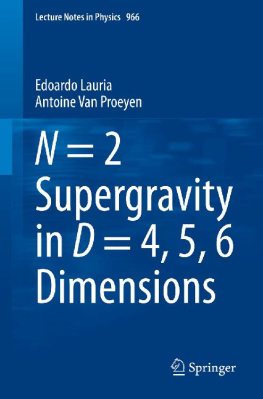

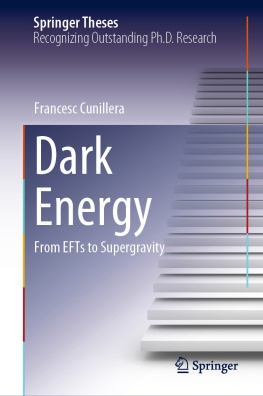
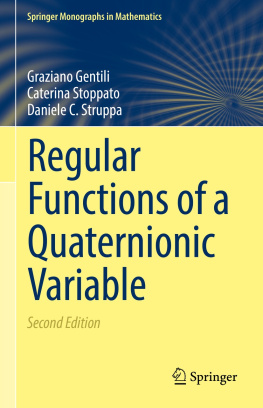
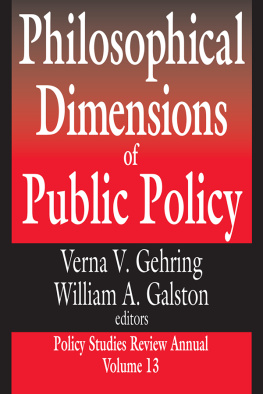
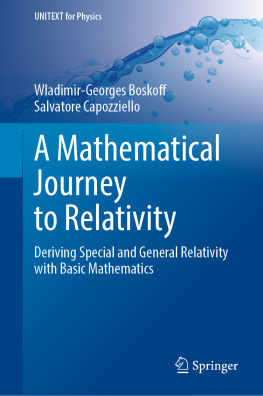
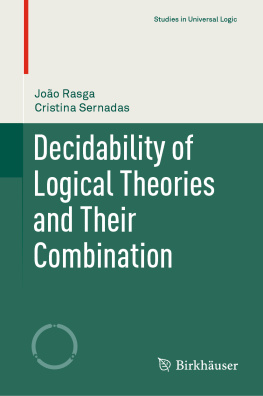
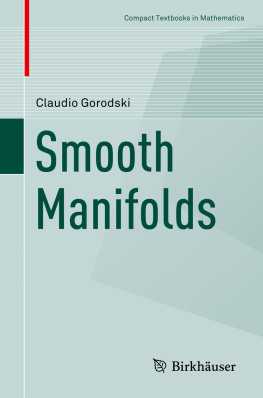

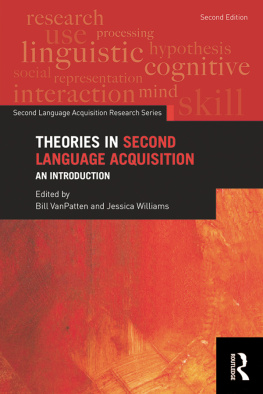
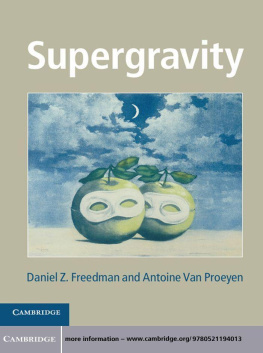

 supergravity. In this book, we want to provide a detailed explanation of these theories and tools that researchers have used to construct supergravity theories with 8 real supercharges, in 4, 5 and 6 dimensions.
supergravity. In this book, we want to provide a detailed explanation of these theories and tools that researchers have used to construct supergravity theories with 8 real supercharges, in 4, 5 and 6 dimensions. supergravities, and we thank Eric Bergshoeff, Marco Bill, Anna Ceresole, Piet Claus, Frederik Coomans, Ben Craps, Eugne Cremmer, Sorin Cucu, Riccardo DAuria, Gianguido DallAgata, Mees de Roo, Bernard de Wit, Tim de Wit, Jean-Pierre Derendinger, Martijn Derix, Sergio Ferrara, Pietro Fr, Dan Freedman, Jos Gheerardyn, Luciano Girardello, Rein Halbersma, Renata Kallosh, Costas Kounnas, Paul Lauwers, Marin Lled, scar Maci, Roeland Philippe, Tullio Regge, Diederik Roest, Frederik Roose, Jan Rosseel, Ergin Sezgin, Paolo Soriani, S.-Q. Su, Walter Troost, Franois Vanderseypen, Stefan Vandoren, Jan-Willem van Holten, Kor Van Hoof, Veeravalli Varadarajan and Bert Vercnocke who contributed significantly to the content in this book. We thank the many colleagues whose remarks have been helpful to improve the text: Marco Baggio, Nikolay Bobev, Alessio Celi, Jan De Rydt, Alessandra Gnecchi, Dietmar Klemm, Joris Van den Bergh and Marco Zagermann. Special thanks also to Stefan Theisen who encouraged us to write this review.
supergravities, and we thank Eric Bergshoeff, Marco Bill, Anna Ceresole, Piet Claus, Frederik Coomans, Ben Craps, Eugne Cremmer, Sorin Cucu, Riccardo DAuria, Gianguido DallAgata, Mees de Roo, Bernard de Wit, Tim de Wit, Jean-Pierre Derendinger, Martijn Derix, Sergio Ferrara, Pietro Fr, Dan Freedman, Jos Gheerardyn, Luciano Girardello, Rein Halbersma, Renata Kallosh, Costas Kounnas, Paul Lauwers, Marin Lled, scar Maci, Roeland Philippe, Tullio Regge, Diederik Roest, Frederik Roose, Jan Rosseel, Ergin Sezgin, Paolo Soriani, S.-Q. Su, Walter Troost, Franois Vanderseypen, Stefan Vandoren, Jan-Willem van Holten, Kor Van Hoof, Veeravalli Varadarajan and Bert Vercnocke who contributed significantly to the content in this book. We thank the many colleagues whose remarks have been helpful to improve the text: Marco Baggio, Nikolay Bobev, Alessio Celi, Jan De Rydt, Alessandra Gnecchi, Dietmar Klemm, Joris Van den Bergh and Marco Zagermann. Special thanks also to Stefan Theisen who encouraged us to write this review.